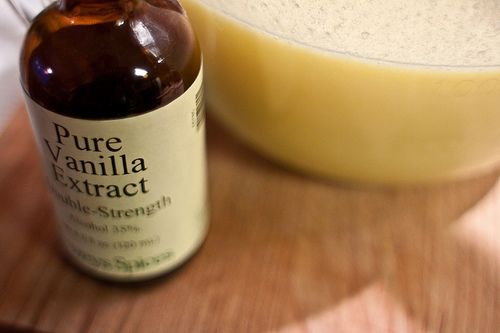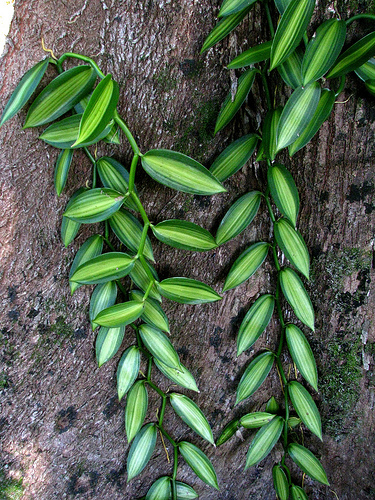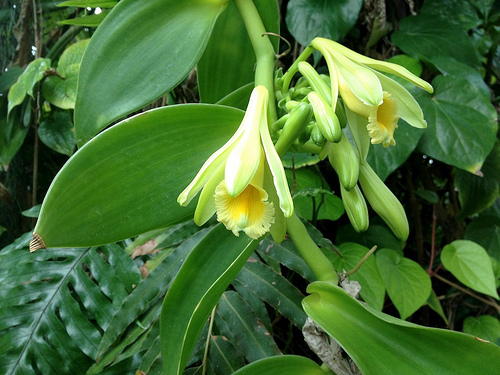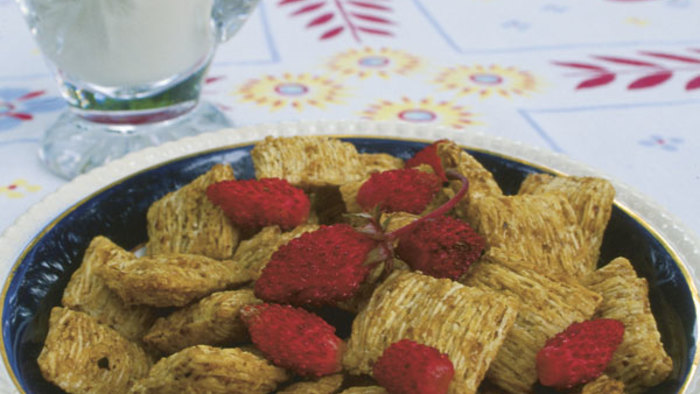
While you’re baking cookies and cakes this holiday season, you’ll probably have vanilla extract in your hands more than once. If you’re using unadulterated pure vanilla extract (as opposed to its copycat, imitation vanilla extract), you just might notice the steep price as well. If you’re holding a bottle of pure vanilla extract at a cheap price, it’s probably adulterated (not as pure as it should be).
Learn more: Success with Orchids Indoors
So why are vanilla beans so expensive?

It may surprise you to learn that vanilla bean pods come from an orchid (which already sounds expensive). In fact, the vanilla orchid (Vanilla planifolia) is the only orchid that produces an edible fruit. It was originally discovered climbing among the trees in Mexico and was later introduced to other warm tropical and subtropical regions of the world.
It’s only one of about 100 climbing and terrestrial (land) orchids and can climb anywhere from 10 to 80 feet into trees or shrubs. Vanilla orchid’s natural pollinator is a Melipona bee species that is only found in Mexico, so for many years this was the single resource for vanilla beans.
Today, vanilla is grown commercially in Madagascar, the Caribbean, Mexico, the Comoro Islands, Indonesia, Hawaii, and Tahiti. The cultivation of vanilla is extremely labor-intensive. The plants themselves don’t even start producing vanilla beans until after three years. When they finally do bloom, the flowers only stay open for one day and have to be carefully pollinated within 12 hours of blooming.
To ensure pollination and the best vanilla bean flavor, each flower on every orchid is hand-pollinated. This is especially true for plants grown in areas other than Mexico, where there would at least be Melipona bees to help out.
This is harder than it sounds, considering the flowers are opening every day at different times for several weeks. It takes nine full months for the seed pods to mature enough to harvest, and every pod matures at a different rate. Which means, like the tedious flower pollination, workers are harvesting daily for three to four weeks at a time. Following the harvest, the seedpod-curing process takes another three months. There’s simply no rushing the production of pure vanilla extract, which is why this liquid spice remains so expensive.

Growing Your Own Vanilla Bean Plant
Vanilla bean plants aren’t especially hard to grow. But if your outdoor climate isn’t ideal, they’re well-suited to the greenhouse, as well as indoors among other houseplants.

Description: Vanilla orchids are evergreen plants with 6-inch, yellow-green, fleshy foliage. The tubular flowers are white, yellow, or green and about 5 inches across.
Conditions: Vanilla orchids prefer high humidity and should be grown in an area where nighttime temperatures don’t drop below 55°, which makes gardens in USDA Zones 10–11 their best bet. Bright light and filtered shade is preferred.
Bloom time: Although you may not see a bloom on a cutting for a couple of years, their blossoms show up in mid-spring to late summer—and only for one day. If the flowers are successfully pollinated (which would have to be done by the gardener), 6- 10-inch long seedpods will follow about nine months later.
Soil: Vanilla likes a neutral soil pH (6.6–7.5). The potting medium should be well-draining and humus-rich. Yes, you could come up with your own blend, but it’s easier to purchase a proper soil mix specific to orchids.
Water needs: Keep the soil evenly moist at all times, taking care not to overwater at the same time. This orchid may not like its feet to dry out between waterings, but it doesn’t want rotten roots, either.
Care and feeding: During the spring and summer, lightly fertilize your vanilla bean plant every two weeks with an orchid fertilizer. Offer the vines some type of support for climbing and clinging, such as a wooden trellis.
Fine Gardening Recommended Products

The New Organic Grower, 3rd Edition: A Master's Manual of Tools and Techniques for the Home and Market Gardener, 30th Anniversary Edition
Fine Gardening receives a commission for items purchased through links on this site, including Amazon Associates and other affiliate advertising programs.

Fort Vee - Organic Potting Soil Mix
Fine Gardening receives a commission for items purchased through links on this site, including Amazon Associates and other affiliate advertising programs.

Chapin International 10509 Upside-Down Trigger Sprayer
Fine Gardening receives a commission for items purchased through links on this site, including Amazon Associates and other affiliate advertising programs.
















Comments
Log in or create an account to post a comment.
Sign up Log in